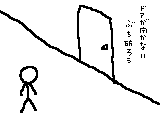By Wynne Parry
LiveScience.com – Mon, Jul 11, 2011
Buried deep beneath the sediment of the North Atlantic Ocean lies an ancient, lost landscape with furrows cut by rivers and peaks that once belonged to mountains. Geologists recently discovered this roughly 56-million-year-old landscape using data gathered for oil companies.
"It looks for all the world like a map of a bit of a country onshore," said Nicky White, the senior researcher. "It is like an ancient fossil landscape preserved 2 kilometers (1.2 miles) beneath the seabed."
So far, the data have revealed a landscape about 3,861 square miles (10,000 square km) west of the Orkney-Shetland Islands that stretched above sea level by almost as much as 0.6 miles (1 km). White and colleagues suspect it is part of a larger region that merged with what is now Scotland and may have extended toward Norway in a hot, prehuman world.
History beneath the seafloor
The discovery emerged from data collected by a seismic contracting company using an advanced echo-sounding technique. High pressured air is released from metal cylinders, producing sound waves that travel to the ocean floor and beneath it, through layers of sediment. Every time these sound waves encounter a change in the material through which they are traveling, say, from mudstone to sandstone, an echo bounces back. Microphones trailing behind the ship on cables record these echoes, and the information they contain can be used to construct three-dimensional images of the sedimentary rock below, explained White, a geologist at the University of Cambridge in Britain.
The team, led by Ross Hartley, a graduate student at the University of Cambridge, found a wrinkly layer 1.2 miles (2 km) beneath the seafloor — evidence of the buried landscape, reminiscent of the mythical lost Atlantis.
The researchers traced eight major rivers, and core samples, taken from the rock beneath the ocean floor, revealed pollen and coal, evidence of land-dwelling life. But above and below these deposits, they found evidence of a marine environment, including tiny fossils, indicating the land rose above the sea and then subsided — "like a terrestrial sandwich with marine bread," White said.
The burning scientific question, according to White, is what made this landscape rise up, then subside within 2.5 million years? "From a geological perspective, that is a very short period of time," he said.
The study appear on July 10 2011 in the journal Nature Geoscience.
Tuesday, July 12, 2011
Owl leaves perfect imprint on window

An owl was left in a flap after crashing into a window, leaving a near perfect print of itself on the glass.
Sally Arnold returned home to Kendal, Cumbria, and found the huge imprint complete with eyes, beak and feathers on her bedroom window.
She said: "Our first concern was for the welfare of what we suspected was an owl and we opened up the window to check if it was still around.
"Fortunately, there was no sign of the bird and we can only assume that it had flown away probably suffering from a headache."
The silhouette was left by the bird's "powder down" - a substance protecting growing feathers.
Experts from the Royal Society for the Protection of Birds (RSPB) confirmed the bird was most likely a tawny owl because of its size and shape and the fact that they appear in gardens more regularly than others.
Val Osborne, head of the RSPB's wildlife inquiries team, said: "We don't very often see an imprint of a bird that's flown into a window that's this clear and where it's pretty obvious exactly what kind of birds it is.
"This would have been very uncomfortable for the bird but thankfully it looks like it survived as Mr and Mrs Arnold couldn't find it anywhere close by.
"Sadly, many birds aren't so lucky."
By Press Association , 12/7/2011
Subscribe to:
Comments (Atom)


















